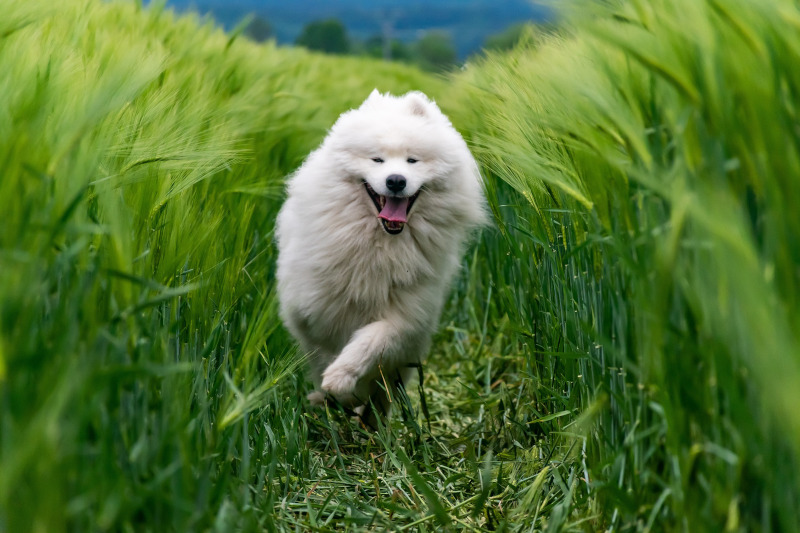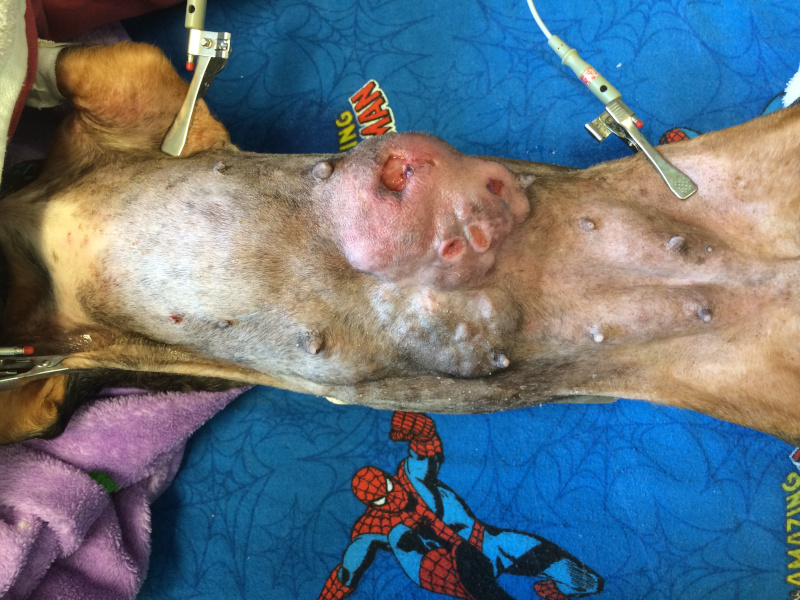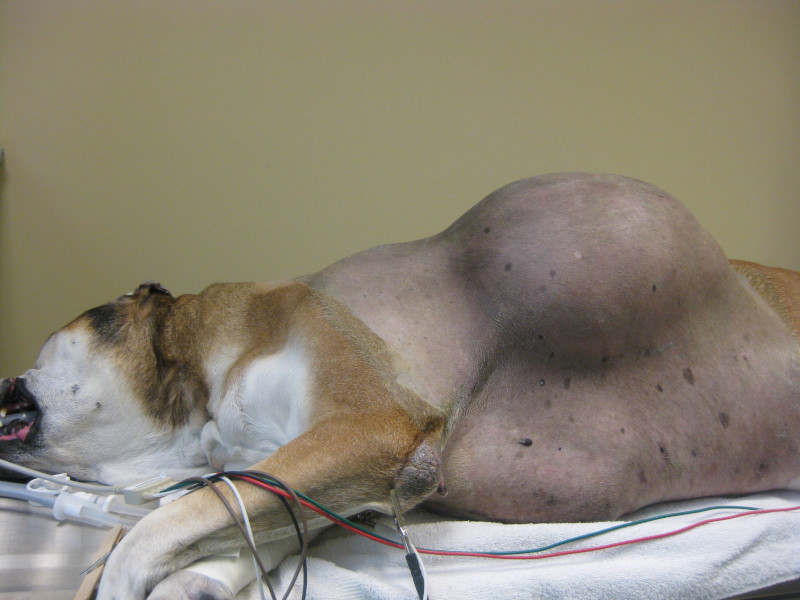Dr. Phil Zeltzman’s Blog
When should my pet’s tumor be removed?

As much as I enjoy a challenge, I would rather remove a small tumor than a big one.
There are at least 15 reasons for that:
1. A smaller mass means a less invasive surgery
2. A smaller mass means a shorter incision
3. A smaller mass means a shorter anesthesia
4. A smaller mass means a less expensive surgery
5. A smaller cancerous mass usually means fewer chances of spreading to other organs
6. A smaller mass means fewer chances of rupturing/bleeding/infection

7. A smaller mass means fewer complications related to surgery (fluid build-up, failure of the stitches, etc.)
8. A smaller mass means fewer complications related to the tumor (increased calcium levels, decreased sugar (glucose) levels, seizures etc.)
9. A smaller bone tumor means fewer chances of a fracture
10. A smaller tumor means fewer chances of losing a body part (leg, tail, eye)
11. A smaller tumor means less pain before AND after surgery
12. A smaller tumor means fewer chances of a life-threatening emergency (e.g. inability to pee or breathe)
13. A smaller mass may mean a shorter recovery
14. A smaller mass usually means a better outcome
15. A smaller mass removal means a safer surgery

This was a cancerous mass (fibrosarcoma) in a 12 year old pitbull
Although some of the above reasons may seem obvious, we regularly remove large tumors.
We can still help these patients.
Sometimes the outcome is still good, and sometimes it’s much worse than it could have been…
Also please don’t fall into the trap of assuming:
- It’s just a fatty tumor
- It’s just a cyst
- It’s just a polyp
NOBODY can say for sure what a mass is by simply looking at it or feeling it. Only a biopsy can.
Anything else is an assumption, or an educated guess at best.
So for your pet’s sake, schedule a consult with your family vet or a board-certified surgeon as soon as you notice a mass, a lump, or a bump, anywhere in the body.
Better safe than sorry…
If you would like to learn how we can help your pet with safe surgery and anesthesia, please contact us through www.DrPhilZeltzman.com
Never miss a blog by subscribing here: www.DrPhilZeltzman.com/blog
Phil Zeltzman, DVM, DACVS, CVJ, Fear Free Certified
Pete Baia, DVM, MS, DACVS

Dr. Phil Zeltzman is a traveling veterinary surgeon in Pennsylvania & New Jersey. An award-winning author, he loves to share his adventures in practice along with information about vet medicine and surgery that can really help your pets. Dr. Zeltzman specializes in orthopedic, neurologic, cancer, and soft tissue surgeries for dogs, cats, and small exotics. By working with local family vets, he offers the best surgical care, safest anesthesia, and utmost pain management to all his patients. Sign up to get an email when he updates his blog, and follow him on Facebook, too!

